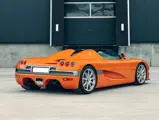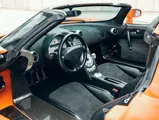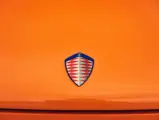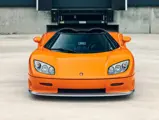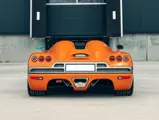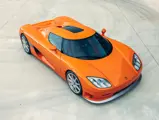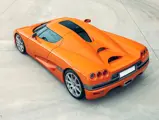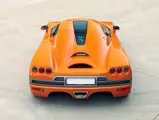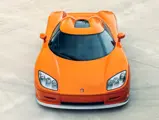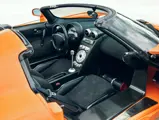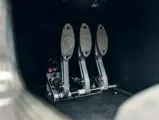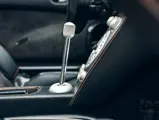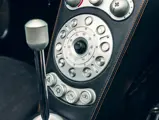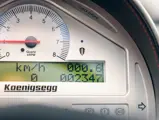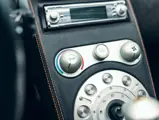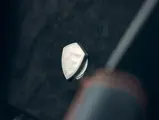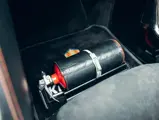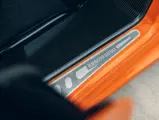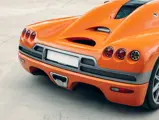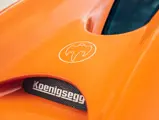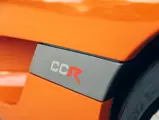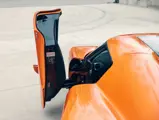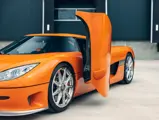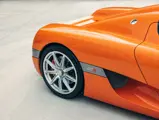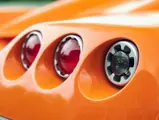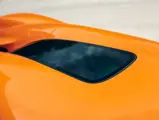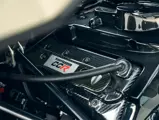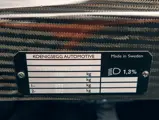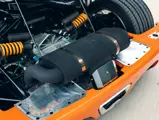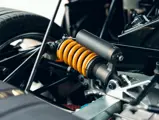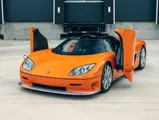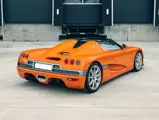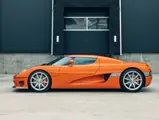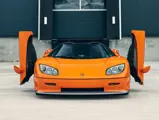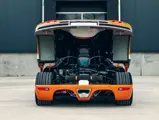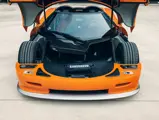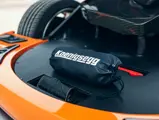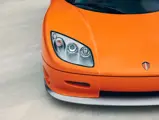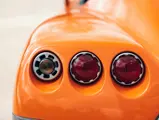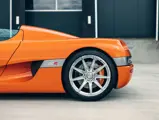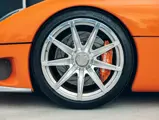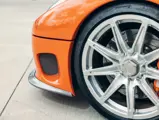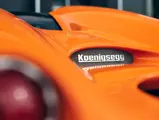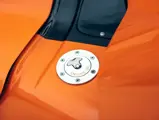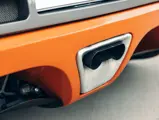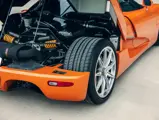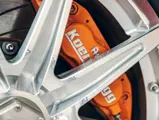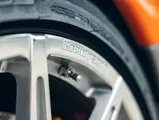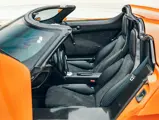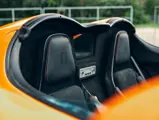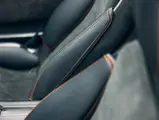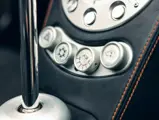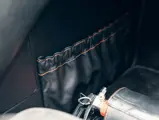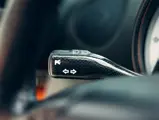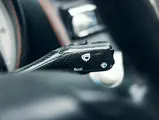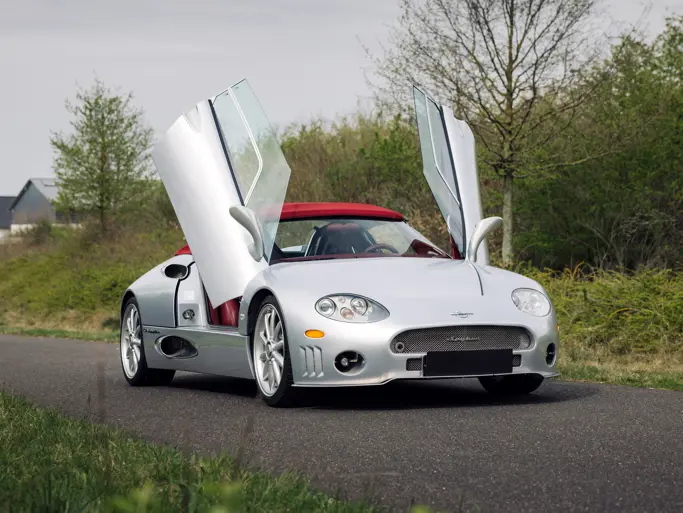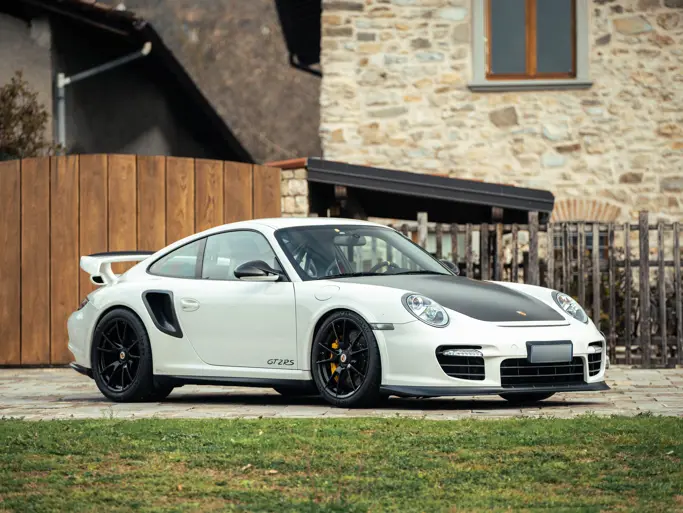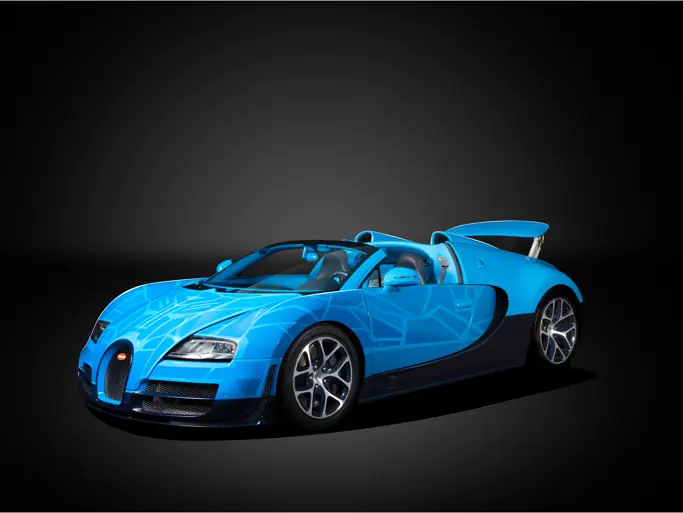Milan
2004 Koenigsegg CCR
{{lr.item.text}}
€798,125 EUR | Sold
 | Milano, Italy
| Milano, Italy
{{internetCurrentBid}}
{{internetTimeLeft}}

- The first CCR revealed to the public; exhibited by Koenigsegg at the 2004 Geneva International Motor Show
- The third of 14 examples produced between 2004 and 2006
- 2,347 kilometers indicated at time of cataloguing
- One of the fastest production vehicles ever made; factory-rated at 806 bhp with a reported top speed of 387 km/h
- La prima CCR rivelata al pubblico; esposta da Koenigsegg al Salone Internazionale dell'Automobile di Ginevra del 2004
- Il terzo di 14 esempi prodotti tra il 2004 e il 2006
- 2.347 chilometri indicati al momento dell’inserimento in questo catalogo
- Uno dei veicoli di serie più veloci mai realizzati; testata in fabbrica a 806 CV con una velocità massima dichiarata di 387 km/h
KOENIGSEGG VERSUS THE WORLD
The idea of building one’s own supercar to compete with the likes of Ferrari, Lamborghini, and McLaren would generally be considered ludicrous. How could one man’s vision compete with such established sporting pedigree and record-setting engineering?
From time to time, however, someone does indeed attempt such a feat and, on even rarer occasions, succeeds brilliantly. Christian von Koenigsegg created his eponymous supercar company in 1994, at age 22; his aspiration was to build nothing short of the greatest supercar in history. Over the next three years, his small team created a prototype constructed using a radical carbon fiber tub and a litany of automotive engineering firsts. This car, named the Koenigsegg CC (Competition Coupé), was first publicly displayed at the Cannes Film Festival in 1997, and the reaction from public and press alike was overwhelming. Confident his cars would find buyers, Christian left Cannes with nothing other than production on his mind.
By 2002, Koenigsegg had released the sportier and more refined CC8S. Meanwhile, development was well underway on the fledging company’s third model, the CCR. The two cars share many characteristics, though the CCR is clearly an evolution upon the specifications and equipment of its predecessor. The CCR was fitted with new suspension and braking systems developed by specialists, a titanium exhaust, larger alloy wheels, and far greater aero-work creating significantly more downforce. All these upgrades were made necessary because the car’s 4.6-liter, aluminum-block, twin-supercharged V-8 engine had been tuned to produce an astonishing 806 brake horsepower. In February 2005, a Koenigsegg CCR dethroned the McLaren F1 as the fastest production car ever built, with a top speed of 387 km/h. Only 14 examples would be built before production ceased in 2006.
CCR CHASSIS NUMBER 7011
This 2004 Koenigsegg CCR, chassis number 7011, is the third CCR example produced and is built upon the 11th carbon fiber chassis completed by the factory (hence its VIN designation). Finished in dramatic Lava Orange over a bespoke color-matched interior, 7011 is the exact CCR Koenigsegg unveiled to the public at the 2004 Geneva International Motor Show. 7011 was also heavily featured in period press photography released by Koenigsegg and is, quite possibly, the most well known CCR example of the scant 14 examples produced.
Following its time in the spotlight, this car’s German registration indicates that it was first registered on 23 May 2006. By 2009, 7011 had traveled just 1,150 kilometers while within the care of a collector in France. Since then, this alluring Koenigsegg CCR has seen regular servicing and enjoyment after time in several noted collections within Luxembourg and Germany. In preparation for sale, 7011 has just been serviced by marque specialists at Esser Automotive, the official Koenigsegg dealer in Aachen, Germany.
Now showing 2,347 kilometers at the time of cataloguing, 7011 is a supremely rarified and alluring offering that would be well suited for acquisition by the most astute of collectors.
KOENIGSEGG CONTRO IL MONDO
L'idea di costruire la propria supercar per competere con Ferrari, Lamborghini e McLaren sarebbe generalmente considerata ridicola. Come potrebbe la visione di un uomo competere con un pedigree sportivo così consolidato e un'ingegneria così raffinata?
Di tanto in tanto, tuttavia, qualcuno tenta davvero un'impresa del genere e, in occasioni ancora più rare, ci riesce brillantemente. Christian von Koenigsegg ha creato la sua omonima azienda di supercar nel 1994, all'età di 22 anni; la sua aspirazione era quella di costruire, semplicemente, la migliore supercar della storia. Nei tre anni successivi, il suo piccolo team ha creato un prototipo costruito utilizzando un’innovativa vasca in fibra di carbonio a cui si aggiungono una serie quasi infinita di primati dell'ingegneria automobilistica. Questa vettura, chiamata Koenigsegg CC (Competition Coupé), è stata esposta per la prima volta al Festival di Cannes nel 1997 e la reazione del pubblico e della stampa è stata travolgente. Fiducioso che le sue auto avrebbero trovato acquirenti, Christian lasciò Cannes con nient'altro in mente che la produzione.
Nel 2002, Koenigsegg aveva presentato la CC8S, più sportiva e più raffinata. Nel frattempo, lo sviluppo del terzo modello dell'azienda nascente, la CCR, era a buon punto. Le due vetture condividono molte caratteristiche, sebbene la CCR sia chiaramente un'evoluzione rispetto alle specifiche e all'equipaggiamento del suo predecessore. La CCR è dotata di nuove sospensioni e sistemi frenanti sviluppati da specialisti, uno scarico in titanio, cerchi in lega più grandi e un’aerodinamica nettamente migliore capace di creare una deportanza significativamente maggiore. Tutti questi aggiornamenti si sono resi necessari perché il motore V-8, con doppio compressore, da 4,6 litri e monoblocco in alluminio era stato messo a punto per produrre una sorprendente potenza, al banco freno, di 806 Cv. Nel febbraio 2005, una Koenigsegg CCR detronizzò la McLaren F1 come l'auto di serie più veloce mai costruita, con una velocità massima di 387 km/h. Ne sono stati prodotti solo 14 esemplari prima che, nel 2006, cessasse la produzione.
NUMERO TELAIO CCR 7011
Questa Koenigsegg CCR del 2004, numero di telaio 7011, è il terzo esemplare di CCR prodotto ed è costruito sull'undicesimo telaio in fibra di carbonio completato dalla fabbrica (da qui il suo numero di telaio). Rifinito nello spettacolare Lava Orange su interni personalizzati in tinta, la vettura con telaio 7011 è la CCR Koenigsegg che è stata mostrata al pubblico al Salone Internazionale dell'Automobile di Ginevra del 2004. 7011 è stata anche ampiamente utilizzata come soggetto nelle fotografie realizzate da Koenigsegg e fornite alla stampa dell'epoca ed è, molto probabilmente, l'esemplare di CCR più noto tra i 14 prodotti.
Dopo essere stata sotto i riflettori, la targa tedesca di questa vettura indica che è stata immatricolata per la prima volta il 23 maggio 2006. Nel 2009, “7011” aveva percorso appena 1.150 chilometri mentre era di proprietà di un collezionista francese. Da allora, questa seducente CCR di Koenigsegg è stata sottoposta a regolare manutenzione ed ha portato allegria a diversi noti collezionisti, in Lussemburgo e in Germania. In preparazione alla vendita, 7011 è appena stata revisionata dagli specialisti del marchio presso la Esser Automotive, il rivenditore ufficiale Koenigsegg di Aquisgrana, in Germania.
Con 2.347 chilometri indicati al momento dell’inserimento a catalogo 7011 è un'offerta estremamente rara e affascinante, adatta per essere acquistata dai collezionisti più astuti.


